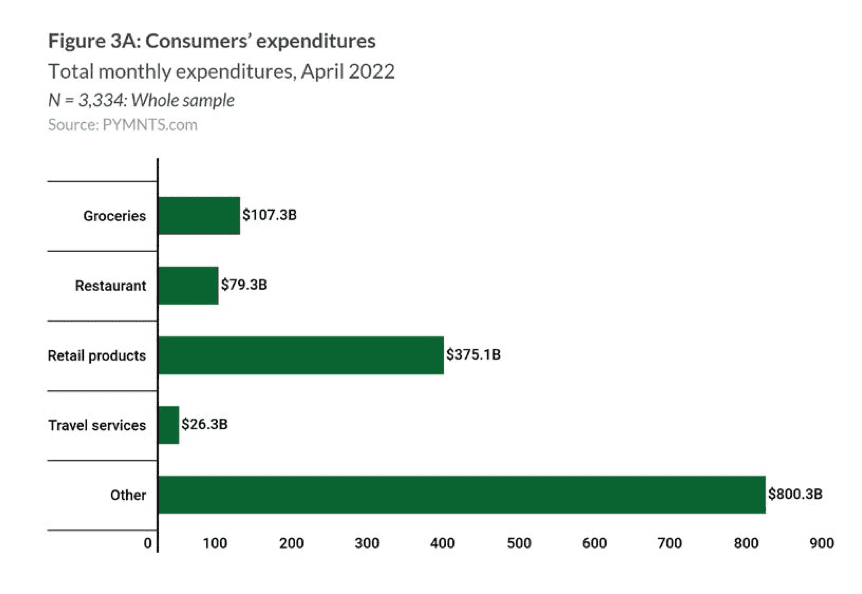The Data Point: An Inflationary Face Punch as Payment Declines Spike by 43% March to April
When the U.S. Department of Labor and the Federal Reserve revealed that consumer prices had risen 8.5% by the end of March — by far the biggest increase the highest increase in over 40 years — it was a red alert that 2022 will be another year of navigating financial shoals.
Whether it’s technically a recession by economists’ standards is immaterial to shoppers who find their buying power diminished and are switching up products and merchants to make up the difference where and when they can.
Effects are evident in PYMNTS’ monthly tracking. Based on a census-balanced survey of nearly 3,100 U.S. consumers, Digital Economy Payments May 2022 U.S. Edition: How Consumers Pay In The Digital World takes the temperature of the market running hot and cold right now.
The following data points are expanded on greatly in the full report.
Get Your Copy: Digital Economy Payments May 2022 U.S. Edition: How Consumers Pay In The Digital World

- Payment declines rose by 43% between March and April; most were insufficient funds
With PYMNTS finding that 64% of all consumers lived paycheck to paycheck in March 2022, some struggling, some not, things are getting tough. Our latest market soundings are no better.
“In April, a larger share of shoppers found that their attempted transactions failed to complete,” per the report. “PYMNTS learned that 12% of consumers experienced a payment decline in April, a rise from the 9.3% who experienced one in February. The most common reason for payment declines in April was insufficient funds, which stands at 26% of all transaction declines, an increase of 45% from March rates.”

- Consumers spent 10% less on their average grocery and retail purchases in April
When inflation starts to impact grocery spending, that’s a glaring neon sign that things are moving in the wrong direction. Consider this: consumers spent $95 on average for their last grocery purchase in April. One month earlier in March that figure was $110.
The report states, “With inflation rates still uncertain, consumers are likely shifting their purchasing preferences to prioritize bargains or retailers that cater to price-conscious shoppers. Shoppers also reduced their retail spending from $103 in March to $98 in April.”

- 33% of all retail purchases now occur online
For physical shopping, grocery beats all comers in all categories for its essential role in feeding the population. Even in the depths of the pandemic as most stores sat empty, grocery kept humming. That trend continues, meanwhile, more retail purchases are moving online.
“Consumers may be shopping for grocery bargains in stores rather than online: consumers who shopped for all or most of their groceries in-store rose from 86% in March to 88% in April,” the study states.
Conversely, we found that “retail consumers decreased in-store shopping from 71% to 67% between March and April and shifted slightly towards digital, meaning the share of online shopping rose from 29% to 33%.”
Get Your Copy: Digital Economy Payments May 2022 U.S. Edition: How Consumers Pay In The Digital World
